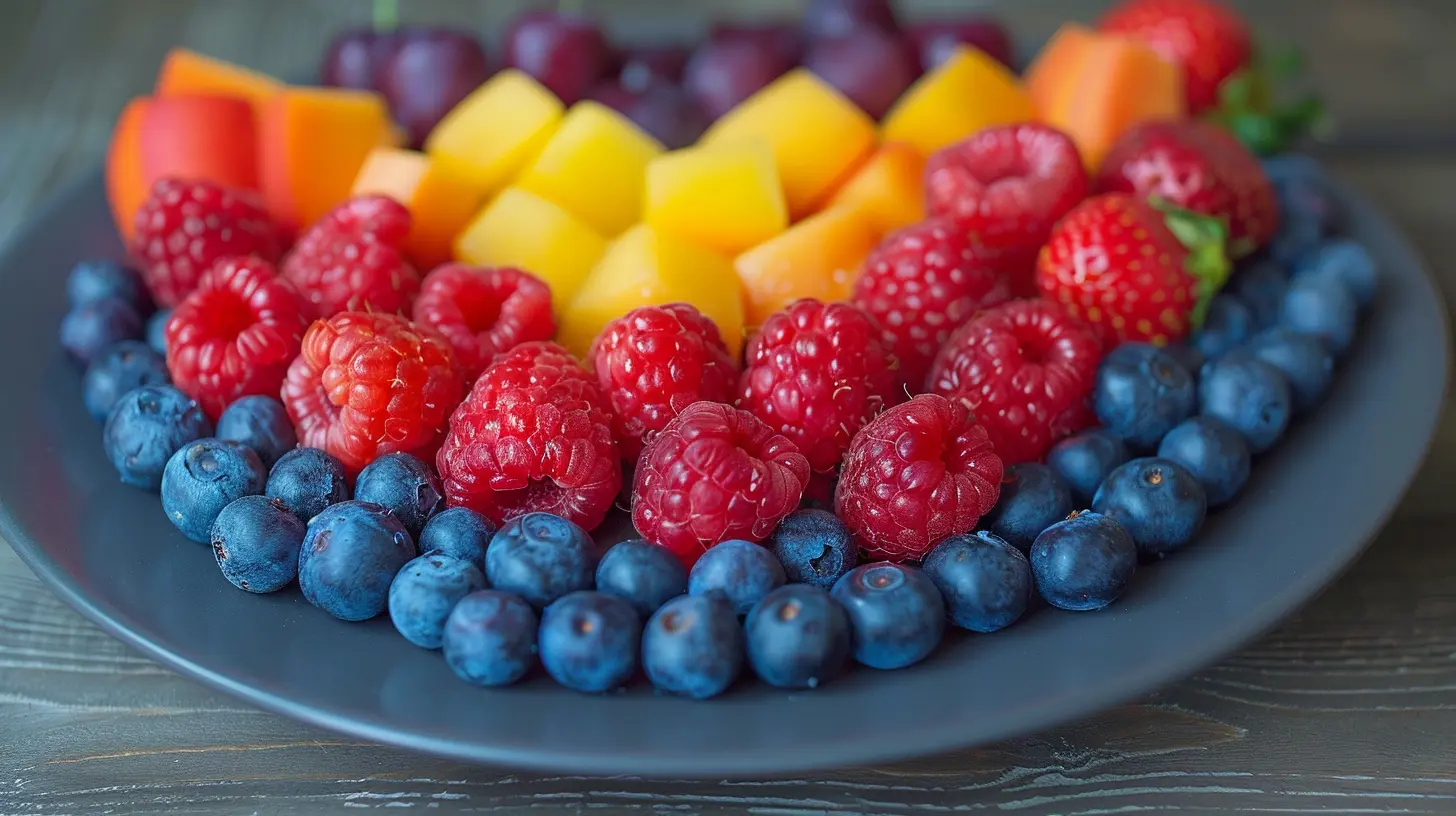How to Teach Kids Mindful Eating Habits
13 June 2025
Let’s face it—feeding kids can be a rollercoaster. One minute they’re happy munching on carrots, the next they’re waging war against broccoli like it’s the final boss in a video game. But what if I told you there’s a way to help your child build a healthy relationship with food that goes way beyond what’s on the plate?
That’s where mindful eating comes in.
In this post, we’re diving deep into how to teach kids mindful eating habits—without making it feel like another boring “life lesson” lecture. We’ll break it all down, step-by-step, with real-life tips that actually work (because hey, we’re parents too).

What is Mindful Eating Anyway?
Mindful eating is all about paying attention to the what, why, and how of eating. It's not a diet or a set of rules—it's a mindset. Basically, it’s tuning in to what your body needs and wants, and savoring each bite. Think of it like switching from autopilot to manual mode during meals.For kids, it’s about helping them understand their hunger cues, enjoy their food, and build a healthy, non-restrictive relationship with eating. Instead of scarfing down dinner in front of a screen, they slow down, taste their food, and feel more connected to it.

Why Mindful Eating Matters for Kids
You might be wondering, is this really necessary? Can’t kids just eat when they’re hungry and stop when they’re full?If only it were that simple.
The truth is, our culture bombards kids with messages about food—what’s “good,” what’s “bad,” when to eat, and what their bodies should look like. Mindful eating helps cut through that noise and puts the focus back on internal cues—not external rules.
The Big Wins of Teaching Mindfulness at the Table:
- Reduces picky eating- Improves digestion
- Prevents mindless snacking
- Promotes better weight regulation
- Builds lifelong healthy habits
- Reduces emotional eating
Pretty powerful, right?

Start With Yourself: Modeling Mindful Eating
Kids are like little human sponges. They soak up everything—your words, your moods, even how you eat. So, if you want to teach mindful eating, you’ve gotta walk the talk.Ever caught yourself inhaling lunch at your desk or eating chips straight from the bag while scrolling Instagram? We've all been there. But making small changes in your own habits can make a huge difference.
Here's how to model mindful eating:
- Eat at the table (not in front of the TV)- Put away screens during meals
- Chew slowly, and talk about how food tastes, smells, and feels
- Pause between bites
- Stop when you're satisfied, not stuffed
When your kids see you doing this without making it a “thing,” they’ll start to pick it up too—like magic (but with more crumbs).

Make Mealtimes a Screen-Free Zone
This one’s a game-changer. Screens are the arch-nemesis of mindfulness. When kids are glued to tablets or TVs while eating, they tune out their bodies completely. They can’t tell if they’re full or still hungry, and food becomes background noise.Making meals screen-free helps children actually experience their food—and learn to enjoy it.
Tip: Start small. Maybe just breakfast and dinner are screen-free to begin with. Consistency is key.
Show, Don’t Preach
Telling your kid to “slow down and chew” is as effective as telling a tornado to chill out. Instead, make it a shared experience. Talk about the food.Try asking:
- “What does your sandwich taste like?”
- “Can you hear the crunch of that carrot?”
- “How does your tummy feel? Are you still hungry?”
These simple questions aren’t lectures—they’re gentle nudges that invite awareness.
Get Hands-On in the Kitchen
Getting your kids involved in cooking is like sneaking veggies into pasta—they don’t even realize they’re learning something valuable.When kids help pick out ingredients, chop veggies (with supervision, of course), or stir the pot, they become more connected to what they’re eating. Food becomes less of a mystery and more of an experience.
Kitchen Activities That Build Mindful Eating:
- Taste different fruits and talk about flavors- Let them build their own plate (buffet style)
- Try a “new food of the week” challenge
- Grow herbs or veggies in a small garden or pot
It’s not about perfection—it’s about giving them ownership.
Teach the Senses Game
Want to make mindful eating fun? Turn it into a game! Use the five senses to explore food:- See: What color is it? What shape does it have?
- Smell: Does it remind you of anything?
- Touch: Is it smooth? Crunchy? Soft?
- Hear: Does it crunch? Pop? Sizzle?
- Taste: Is it sweet, salty, sour?
Games like this turn “eating” into an adventure. It’s all about curiosity, not control.
Ditch the “Clean Plate” Mentality
Raise your hand if you heard, “You can’t leave the table until your plate is clean!” growing up. 🙋That old-school mindset teaches kids to ignore their fullness cues. Mindful eating is the opposite. We want kids to listen to their bodies, not override them.
It’s okay if your child doesn’t finish every meal. Encourage them to check in with their tummy and stop when they feel full. Let them know that their body knows best.
Talk About Hunger and Fullness
Kids aren’t born knowing how to describe hunger or fullness—it’s something we can teach them, just like learning to read or ride a bike.You can use a simple “hunger scale” with younger kids. Think of it like a fuel gauge:
- 1 = Starving
- 5 = Comfortably full
- 10 = Overstuffed
Ask them where they fall before, during, and after meals. Over time, they’ll start to connect with those internal signals.
Don’t Label Foods as “Good” or “Bad”
This might be one of the most important points. When we label foods as “bad,” we create shame around eating. It turns snacks and treats into forbidden fruit—and guess what happens next? Kids want them even more.Instead, talk about foods in terms of how they help our bodies:
- “Carrots help our eyes see better.”
- “Chicken gives us energy to play.”
- “Cookies are fun to enjoy sometimes, and that’s totally okay.”
It’s about creating balance, not fear.
Practice Gratitude at Mealtimes
This might feel a little touchy-feely, but trust me, it works. Taking a moment to appreciate your food—even just a few seconds—can totally shift the mood at the table.Ask your kids:
- “What’s something on your plate you’re thankful for?”
- “Who do you think helped bring this food to us?”
This simple ritual helps kids connect with the bigger picture—and slows down the pace of the meal.
Keep It Light, Not Lectury
The goal here isn’t to raise a perfect eater—it’s to raise a kid who feels confident and connected to their body.Be patient. There will be days when your toddler throws peas at the wall instead of eating them. That’s normal. These habits take time, but every bite-sized lesson adds up.
Bonus Tip: Mindful Snacking Matters Too
Mindful eating isn’t just for dinner. Snacks are part of the picture too—and kids love them (who doesn’t?).Offer snacks at regular times, without distractions, and give them a few options to choose from. When they’re part of the decision-making process, it builds trust and independence.
Plus, it helps avoid that mindless munching when emotions run high.
When to Start Teaching Mindful Eating?
Honestly? As early as possible.Even toddlers can start learning to notice textures and flavors. But it’s never too late, either. Whether your child is two or twelve, these habits can be introduced in age-appropriate ways.
Don’t stress about doing everything at once. Pick one new habit, try it for a week or two, and then add another. Think of it like building blocks.
Wrapping It All Up
Teaching kids mindful eating habits isn’t about control or perfection—it’s about connection. When your child begins to tune into their senses, understand their hunger and fullness, and enjoy food without judgment, you’re giving them so much more than a meal. You’re helping them build a lifelong relationship with food that’s rooted in trust and self-awareness.And hey, if you mess it up sometimes (we all do), give yourself a break. Parenting isn’t about getting it all right—it’s about showing up and trying again.
Quick Recap of Key Tips:
- Model mindful eating yourself- Eat without screens
- Let kids help in the kitchen
- Use the senses to explore food
- Teach hunger and fullness cues
- Drop the food guilt
- Keep the vibe casual and pressure-free
Now go on—grab a snack, chew slowly, and soak in the moment. You’ve got this.
all images in this post were generated using AI tools
Category:
Healthy EatingAuthor:

Kelly Snow
Discussion
rate this article
2 comments
Kenneth Butler
Empowering our kids with mindful eating habits shapes their relationship with food for life! Let’s inspire them to savor every bite, fostering a journey of health and happiness together!
June 17, 2025 at 4:25 AM

Kelly Snow
Absolutely! Cultivating mindful eating from a young age not only enhances their relationship with food but also promotes lifelong health and joy. Let's lead by example and inspire them every step of the way!
Zylith Becker
What a fantastic article! Teaching kids mindful eating habits is such a valuable life skill. Encouraging them to savor their food, recognize hunger cues, and appreciate flavors can set the foundation for a healthy relationship with food. Thanks for sharing these practical tips—can’t wait to try them with my little ones!
June 13, 2025 at 4:56 AM

Kelly Snow
Thank you so much for your kind words! I'm glad you found the tips helpful and I hope your little ones enjoy the mindful eating journey!


